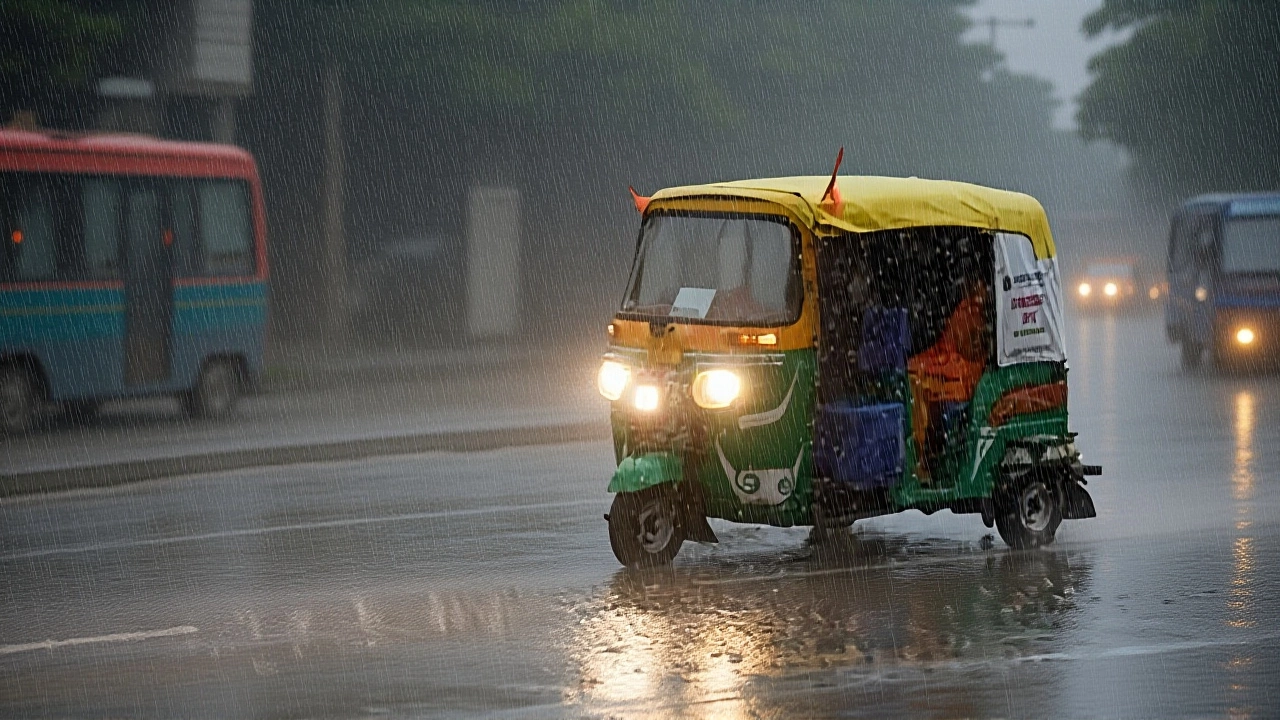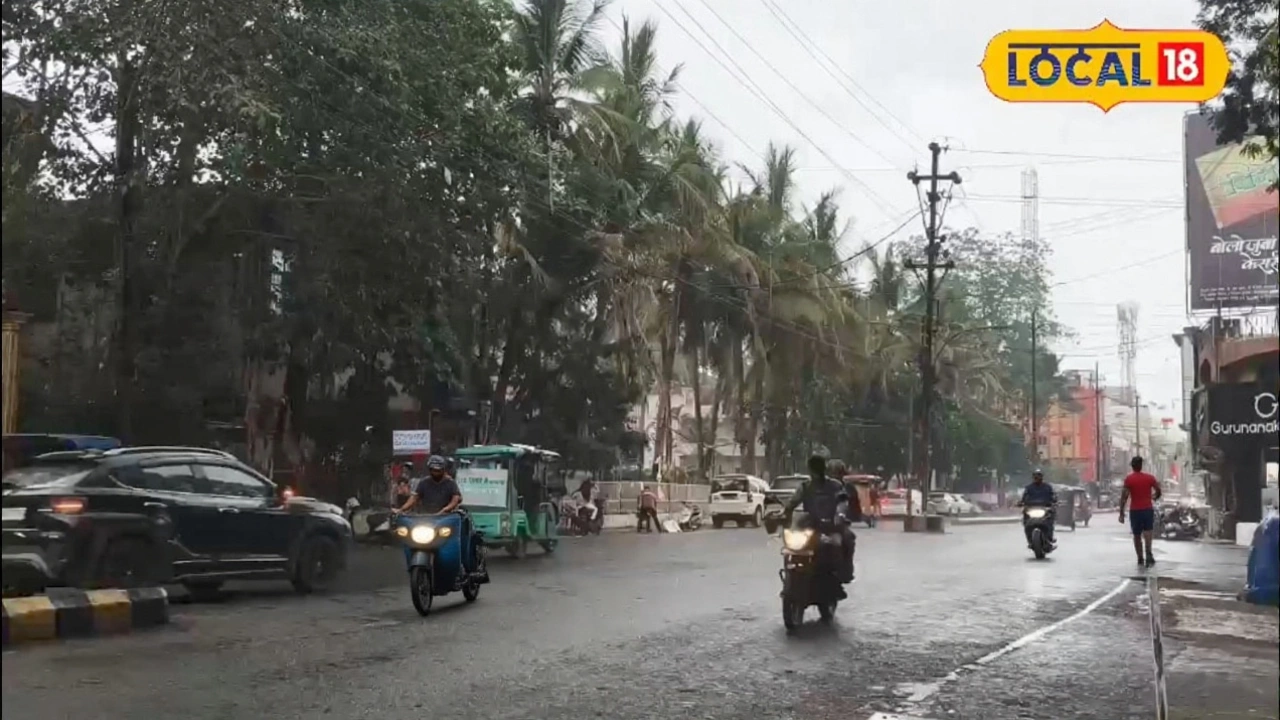
When the first heavy downpour hit Dungarpur on October 28, 2025, residents didn’t just grab their umbrellas—they grabbed sandbags. By dawn on the 29th, water had swallowed roads in Kotda, forcing the closure of seven government schools. It wasn’t just a storm. It was a reminder that monsoon season, long declared over, had refused to leave. The India Meteorological Department (IMD) confirmed it: southern and eastern Rajasthan, including Udaipur, Chittorgarh, and Banswara, were experiencing rainfall patterns not seen in over a century for late October. And the rain wasn’t done.
Record Rain in a Month That Should Be Dry
On October 28, Dungarpur recorded 68 millimeters of rain—the highest in the state in 24 hours. But the real shock came from Udaipur, where 9.2 millimeters fell on the 28th, marking the first time in 100 years that October’s final days saw more than 9mm of precipitation. Locals called it "monsoon ghosting." Farmers, who’d already harvested their kharif crops, now watched as their wheat seedlings drowned. "We were celebrating the end of the season," said Ramesh Choudhary, a grain trader from Udaipur. "Now we’re wondering if the sky forgot to turn off the tap."
The IMD issued alerts for 12 districts: Banswara, Bhilwara, Boondi, Chittorgarh, Dungarpur, Pratapgarh, Rajsamand, Sirohi, Udaipur, Jalore, Pali, and Salumbar. Thunderstorms rolled through these areas with lightning strikes reported near Mount Abu and Kota. Meanwhile, northern districts like Jaipur and Bikaner stayed dry, their skies a dull gray with no rain in sight.
Why Is Rain Still Falling?
The culprit? A stubborn low-pressure system lingering over the central Arabian Sea, combined with a newly formed western disturbance—a rare winter weather pattern that usually hits Punjab and Haryana, not Rajasthan. Meteorologists say the Cyclone Mocha’s residual moisture, still swirling in the Bay of Bengal, got pulled northwestward by upper-level winds. "It’s like a leftover party guest who won’t leave," said Dr. Meera Kapoor, a climate analyst with the India Meteorological Department. "We’ve never seen this kind of persistence in late October. It’s not just unusual—it’s anomalous."
Temperatures plunged 5 to 12 degrees Celsius in the affected zones. In Udaipur, daytime highs dropped from 34°C to 23°C in just 48 hours. Locals wrapped up in shawls and sipped hot chai as mist clung to the Aravalli hills. "It felt like September again," said Priya Mehta, a teacher in Kotda. "My students came in with wet socks. I had to borrow dry towels from the principal’s office."
What Comes Next?
The IMD forecasts continued light to moderate rain in southern Rajasthan through November 3, with isolated heavy spells possible. But the western half—Bikaner, Jodhpur, and the Shekhawati region—will remain dry, with humidity dropping and dust storms returning by November 5. "We’re not looking at another monsoon," clarified IMD’s regional director, Anil Verma. "But the system is still feeding moisture into the south. We’re watching for potential totals above 100mm in some pockets by next week."
That’s significant. Most of Rajasthan receives less than 50mm of rain in the entire month of October. The 68mm in Dungarpur alone was more than half the region’s average October total. And if the rain continues, reservoirs like the Mahi Bajaj Sagar Dam could reach 85% capacity—unheard of this late in the year.

The Human Cost
While the rain revived parched wells and filled irrigation canals, it also disrupted lives. In Kotda, the school closures affected over 1,200 children. Local hospitals reported a spike in respiratory infections among children and the elderly. Power outages hit 14 villages in Chittorgarh after fallen trees took down lines. Farmers in Rajsamand lost nearly 20% of their mustard crop, already vulnerable due to delayed sowing.
Yet, in the villages where the rain came, there was also relief. "We didn’t need to buy water this month," said 72-year-old Laxmi Devi from Baran. "My granddaughter drank from the well for the first time in three years. That’s worth a little mud on the floor."
Frequently Asked Questions
Why is Rajasthan getting rain in October when monsoon season ended in September?
The rain is caused by a lingering low-pressure system over the Arabian Sea and a rare western disturbance, combined with residual moisture from Cyclone Mocha. These systems are unusual for late October, making this an anomaly. Historically, Rajasthan’s monsoon retreats by mid-September; this persistence hasn’t been recorded in over a century in places like Udaipur.
Which areas in Rajasthan are most affected by the rainfall?
Southern and southeastern districts including Udaipur, Chittorgarh, Banswara, Pratapgarh, Rajsamand, and Dungarpur are seeing the heaviest rain. IMD has issued alerts for 12 districts. Meanwhile, northern regions like Jaipur, Bikaner, and Jodhpur remain dry, creating a stark weather divide across the state.
How much rain has been recorded, and is this a record?
Dungarpur recorded 68mm in 24 hours—the highest in Rajasthan for October 2025. Udaipur saw 9.2mm on October 28, the most for late October in 100 years. While not a statewide record, it’s unprecedented for this time of year. Some areas may exceed 100mm total by November 3, far above the monthly average of 20–30mm.
Will this rain continue into November?
Yes. IMD predicts light to moderate rain will persist in southern Rajasthan through November 3–5, especially around Kota and Udaipur. Western regions like Bikaner and Jodhpur will remain dry. While no major monsoon revival is expected, isolated heavy spells could still occur, particularly near the Aravallis.
What impact does this have on agriculture and water resources?
The rain revived groundwater levels and filled small reservoirs, offering relief to farmers who rely on wells. However, it damaged late-sown mustard crops and caused soil erosion in hilly areas. The Mahi Bajaj Sagar Dam is nearing 85% capacity—unusual this late. While beneficial for long-term water security, it’s too late to save most kharif crops.
Are climate change and global warming linked to this unusual weather?
Scientists say yes. Rising sea surface temperatures in the Arabian Sea increase moisture availability, while shifting jet streams are making western disturbances more erratic and intense. Events like this—monsoon linger, extreme late-season rain—are becoming more frequent. Rajasthan’s climate is shifting, and traditional weather patterns are no longer reliable guides.
